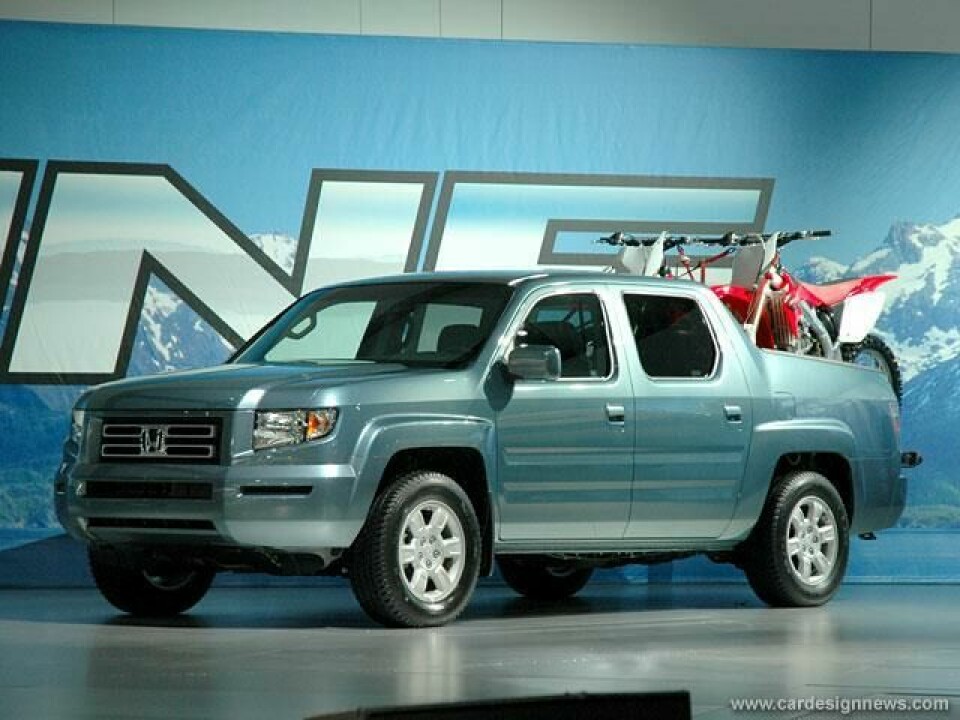
Design Review: Honda Ridgeline
Honda Ridgeline design review
Don’t under estimate the significance of the Honda Ridgeline. Not so very long ago, Honda was pretty much unknown in the States. Then Civics started to pop up as the discerning choice of small economy car and soon after the Accord usurped US brands to become the best seller in its class. Honda, its premium stable mate Acura, and the two other twin Japanese brands; Nissan and Infiniti, and Toyota and Lexus, now dominate much of the US car market. So much so that the US ‘Big Three’ have become quite dependent on selling large SUVs and pickups; the only area of the market where they are able to maintain sales leadership. Fortunately for them this area has blossomed over the last decade to the extent that trucks now account for more than half of all new vehicle sales in North America.
But now, even this last bastion of US brand dominance is under threat and the Honda Ridgeline is leading the attack.
Debuting at last month’s Detroit Auto Show, at 5258mm long, 1930mm wide and 1778mm tall the Ridgeline is very slightly smaller than America’s best selling vehicle, the Ford F-150 pick-up and is also much the same size as the class leading mid-size truck, the new Toyota Tacoma. Central to its design - but unlike these two trucks - the Ridgeline has a monocoque-unibody structure (sitting on top of a boxed ladder chassis to provide greater durability and appease truck traditionalists). This improves crash performance and gives the vehicle massively better torsional rigidity than a separate chassis pick-up, which in turn improves its ride, handling and NVH.
This construction also explains the nomenclature of the Honda SUT concept that previewed its design at last year’s show; it is part of a new breed of Sports Utility Truck - essentially monocoque SUVs with pickup flat beds at the rear as pioneered by the Ford Explorer Sport Trac.
Honda have chosen to make their monocoque body approach to this sector evident also in the Ridgeline’s exterior design with, unique in this sector, a one piece side surface extending from front fender through cabin flanks to the rear fenders. This integrated aesthetic complements a robust, high quality utility design theme evident in its horizontal twin body side recesses, broad framed windows, prominent wheel arch blisters and very few small radius corners. Unique creases running down the A and C pillars into the flanks, kinked rear window DLO that relates to the angled side of the flat bed, and sharper creases defining the fillet surfaces around an Element-style front also give the impression of very thick and strong structures.
At the front of the crew cab the twin exterior body side creases are echoed on the door inners, HVAC, ICE, light switch dial and column change. The door furniture is a modish floating panel and between the front seats is a large, multi function storage container. The back row of seats (accessed via rear hinged doors) split and flip up like the European/Japanese market Honda Jazz/Fit to provide additional stowage space in the cabin. Working with this exceptional level of practical design features is a clean, simple and functionalist aesthetic from the bold and strong forms down to the technical grains on the IP.
And even the centre-piece to a pickup - its flatbed - innovates in its design. Pull a handle on the left and it folds down to extend the flatbed and provide a useful perch. Or pull a handle on the right and it swings open as a door enabling easier access to the flatbed and the commodious additional stowage volume behind the rear axle - lift the lid and slide the spare wheel on its runner forward to access this large deep space that even features a drain plug - useful if it had been filled with ice to cool drinks on a some outdoor social occasion.
Unlike the Accord which was honed for generation after generation throughout the seventies and eighties before it managed to usurp cars like the Ford Taurus, the Ridgeline looks like it will make it through the Big Three’s first line of defence without pausing for breath. This could well be the beginning of the end for US brand dominance of the pickup.

Honda Ridgeline presentation at the 2005 Detroit Auto Show.. Click for larger images





Ridgeline design team with 2004 SUT concept (l-r): Mike Tsay, Jarad Hall, Don Herner, Dave Marek
Photos: Brett Patterson, Marc Beauregard, Oneita Porter, Honda

SUT concept (2004)

SUT concept at the 2004 Detroit Auto Show






Advertisement
Advertisement
Advertisement



